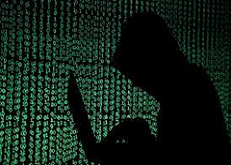|
Polity and Governance
Connecting all 8 Northeast capitals with rail line

|
India has completed the final location survey of three strategic railway lines in the Northeast that aims to help the military push its men and equipment faster into the border areas, especially in Arunachal Pradesh, along China.
About the strategic plan:
- The key lines for which work was sped up are:
- A 200 km broad gauge line between Bhalukpong to Tawang (Arunachal Pradesh),
- 87 km line between Silapathar (Assam) to Along via Bame (Arunachal Pradesh) and;
- 217 km line between Rupai (Assam) to Pasighat (Arunachal Pradesh) which also has an advanced landing ground of the Indian Air Force.
Significance:
- The Bhalukpong-Tawang line is one of the most important projects which will cater to the military’s wide needs in an area which has seen tensions rise with China.
|
|
History
Veer Bal Diwas 2022

|
To mark the martyrdom of the four Sahibzade Khalsa, every year, December 26 will be marked as Veer Bal Diwas.
About:
- Guru Gobind Singh, the leader of the Sikhs in Punjab during the Mughal reign, had four sons. They were referred to as the four Sahibzade Khalsa.
- In 1699, Gobind Singh has established the Khalsa. This elite warrior band had devout Sikhs with the aim to protect the innocent from religious persecution.
- His four sons from three wives: Ajit, Jujhar, Zorawar, and Fateh, were all a part of Khalsa.
- In 1704, the place where the family of Guru Gobind Singh stayed, Anandpur, was under siege.
- Attacked by the Mughal Emperor Aurangzeb, the Sikh Guru accepted to give up the fort for the safety of his people when the supplies started running low.
- However, his youngest two sons, Zorawar and Fateh were taken captive.
- Eventually, they were buried alive in a wall at the tender age of 8 and 5 respectively.
Significance:
- Veer Bal Diwas is commemorated to honour the sacrifices of the four Sahibzades of the Khalsa.
- The young children of the last Sikh Guru, Gobind Singh, laid down their lives while defending their faith.
|
|
Science and Technology
Dark patterns on Internet

|
Social media companies and Big Tech firms such as Apple, Amazon, Skype, Facebook, LinkedIn, Microsoft, and Google use dark or deceptive patterns to downgrade the user experience to their advantage.
What are dark patterns?
- Such patterns are unethical user interface designs that deliberately make your Internet experience harder or even exploit you. In turn, they benefit the company or platform employing the designs.
- By using dark patterns, digital platforms take away a user’s right to full information about the services they are using, and reduce their control over their browsing experience.
- The term is credited to UI/UX (user interface/user experience) researcher and designer Harry Brignull, who has been working to catalogue such patterns and the companies using them since around 2010.
Examples:
- In social media, LinkedIn users often receive unsolicited, sponsored messages from influencers.
- Disabling this option is a difficult process with multiple steps that requires users to be familiar with the platform controls.
|
|
Environment and Ecology
What is Kida Jadi?

|
The Chinese soldiers have been accused of illegally entering India searching for a rare Himalayan called by several names and behind a multi-million dollar market.
- The valuable herb is called ‘Kida Jadi’ in India and is known as Himalayan gold.
About:
- Scientific name: Ophiocordyceps Sinensis
- Cordyceps is usually found in the high-altitude region of the plateau in southwestern China and the Indian Himalayas.
- The value of Cordyceps is around $1,072.50 million in the international market, with China being the largest exporter as well as producer.
- In Indian money, the value of this medicinal herb is around Rs 10-12 lakh per kg in the international market.
- The medicinal herb is known as 'Yarsagumba' in China and Nepal, while in India it is known as 'Keeda Jadi'.
|








